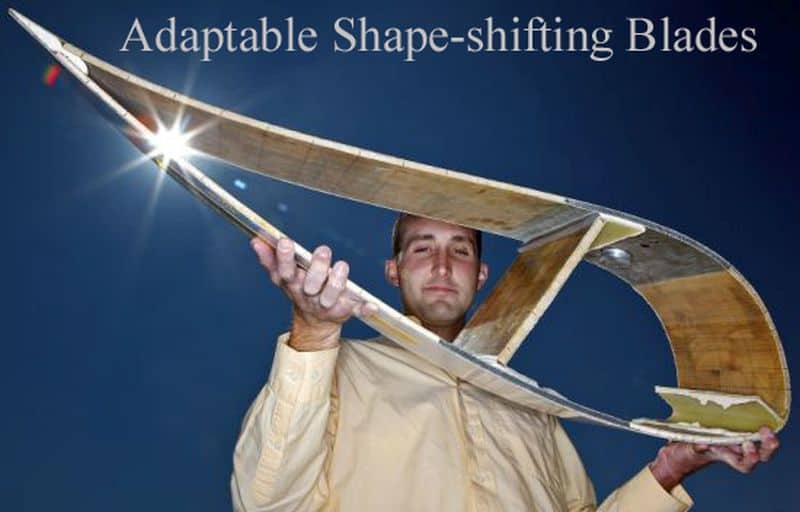Ideal wind speed is what decides the efficiency of a wind turbine. It needs to be tuned for a certain type of wind to be efficient and smart. Thanks to the latest shape-shifting blades designed by researchers at Purdue University and Sandia National Laboratories, which, having sensors and computational software to monitor forces exerted on wind turbine blades, constantly manage the blades to keep on rotating at a uniform speed.
Jonathan White, a doctoral student, and Douglas Adams, a professor of mechanical engineering and director of Purdue’s Center for Systems Integrity, are jointly leading the research. The ultra-modern blades avoid any imminent damage to wind turbines owing to the provision that provides critical real-time information to the control system. So, be it the desert or the windy plains, power generation will not be reliant on the changing wind speeds anymore.
Intelligent Blades:
Near Amarillo, in Texas, White and his colleagues have freshly installed accelerometers along three 10-meter-long blades of a research turbine. These blades are made of balsa wood and fiberglass. While rotor blades, gearbox and generator are the major components of a wind turbine, the blades define how proficient a wind turbine is going to be. The shape-shifting blades have sensors that tout control surfaces with simple flaps and are responsible for changing the aerodynamic traits of the rotor-blades.
It is a breakthrough in improving the efficiency and control of turbines under rapidly changing wind conditions. These sensors calculate the dynamic and the static acceleration, produced from gusting and steady winds respectively. Therefore, they provide data showing the blade’s bends and twists.
Jonathan White suggests:
We eventually want to put aerolons or actuators on the blades to quickly adapt how the blade flies through the air.
The research is still in progress. Therefore, after gathering enough data, the team will work on linking the data from the accelerometers to mechanical actuators or aerolons. Aerolons ensure direct airflow on the control panel and the blade-ends.
Disadvantages of traditional wind turbine blades:
Apart from the negative visual impact, the creation of noise and threat to birds, unreliable wind speed has always been the primary fault of traditional wind turbines. In fact, most of the times, they fester for the want of ideal wind speed. Low wind speeds normally do not propel the blades. These are too narrow for the wind to push the blade around efficiently.
On the contrary, high wind speeds push the blades too quickly and thus threaten to break the blade, and can force operators to limit their speed and energy production.
Future Impact:
Though it is too early to predict anything, still this technological innovation ventures to increase the current installed wind power substantially. Germany, the world’s largest wind power generator, is sure to be sidetracked since the anticipated annual yield of 25,170 megawatts will make the U.S. lead other countries in wind power generation. Mind you, in 2008, the United States added just 8,358 megawatts of new wind-power capacity.
Obviously, this ground-breaking novelty will revolutionize the wind capacity and pave the way for a more energy-efficient future.


